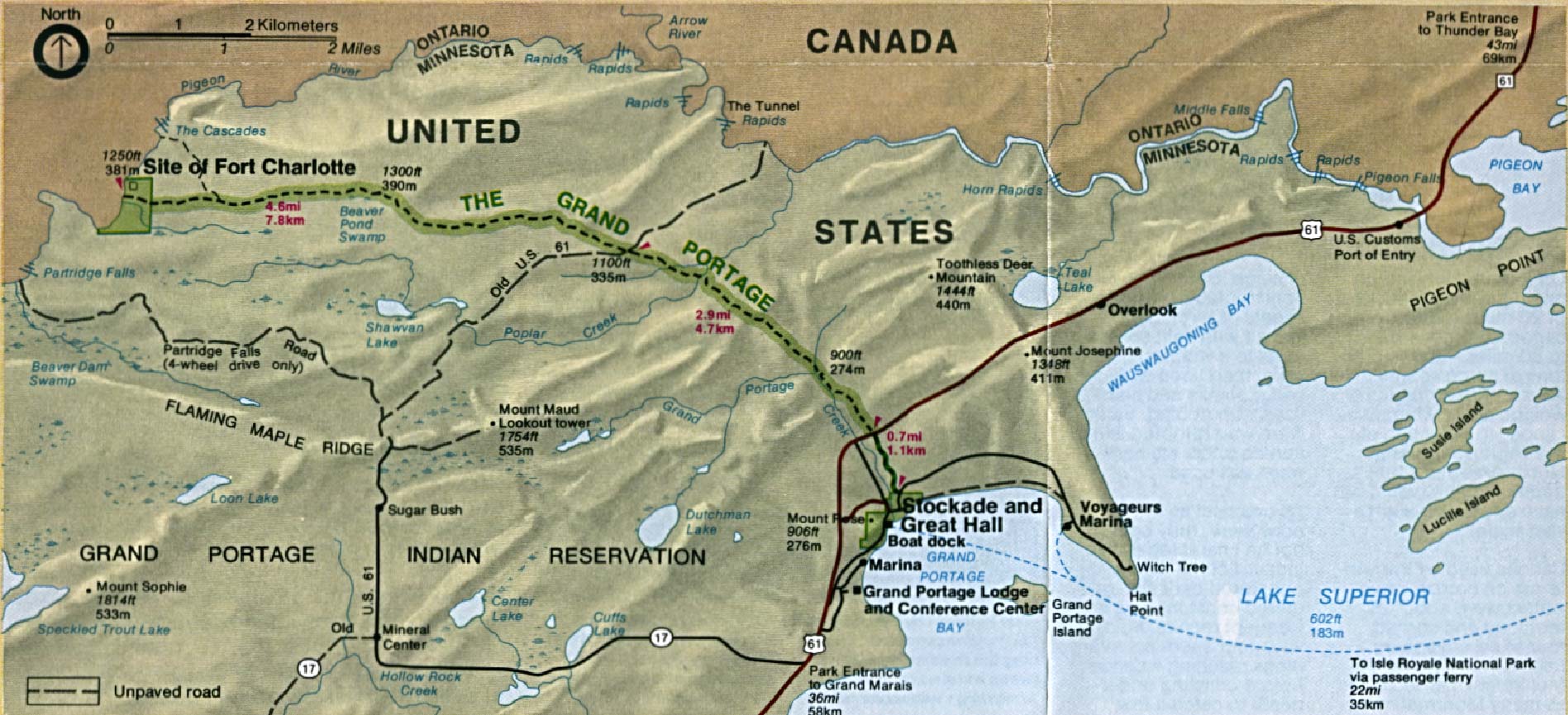Grand Portage National Monument, overview
July 30, 2019
by Steve
This summer we are doing something a bit different for us. Instead of traveling to many places and doing sightseeing, we are staying put in one spot for three and a half months and doing a volunteer gig. This is the first time we've done volunteer work as RVers. Volunteers are used at a lot of state and national campgrounds as camp hosts or other similar positions. Typically in exchange for your 20 or so hours per week, you get a free full-hookup site with utilities paid for the time you are there. We had never really been interested in being camp hosts, and we don't need to do this to save money. So if we were going to volunteer for something, it was going to have to be interesting.
Well, something interesting did show up on volunteer.gov, the website where these of jobs are posted: an opening for a couple to be costumed interpreters (wearing period clothing) at Grand Portage National Monument, a living-history site that is all about the fur trade.
The Grand Portage is a 8.5 mile trail that connects Lake Superior to the Pigeon River. This was the best route to get from the Great Lakes to the waterways that we now call the Boundary Waters. Once in these waters, you can travel via canoe to places as far away as Winnipeg, Lake Athabasca, and the Great Slave Lake. The portage was necessary because the Pigeon River has about 20 miles of waterfalls, cascades, and gorges before it flows into Lake Superior, none of which can be traveled by canoe.
The North West Company, which was a partnership formed by formerly independent fur traders, took advantage of this trail and used it to transport trade goods like fabric, pots, metal tools, guns, etc., into the western and northwestern regions of Canada to be traded for fur.
Voyageurs like the one pictured above paddled the canoes and carried these loads of trade goods, two 90-lb bundles at a time, over all the portages on their canoe routes from Montreal to Grand Portage, and then up the Grand Portage trail to be loaded on canoes to re-supply the inland trading posts.
The North West company operated its inland depot at Grand Portage from 1778 to 1802, and quickly grew to be three times the size of the Hudson Bay Company, its chief competitor. At the Grand Portage site, the North West Company operated a large depot where all the furs it had acquired over the winter at its 100+ inland trading posts were checked, counted, and packaged for transport to Montreal. At the same time as the furs from the trading posts arrived, the trade goods that had been shipped via canoe from Montreal arrived at Grand Portage to be re-packaged for shipment to the inland trading posts. For two weeks each summer there was a great rendezvous with over 1,000 voyageurs at the site.
The Grand Portage National Monument consists of the historic site on Lake Superior, the entire Grand Portage trail, the site of Fort Charlotte on the Pigeon River, and a fairly new visitor center/museum called the Heritage Center. At the visitor center you can learn all about the fur trade, as well as the culture of the Ojibwe people who lived here for centuries, and view exhibits on archaeology that has uncovered early metal tools in the area, some as old as 7,000 years. It also has a fantastic view of Lake Superior.
 |
| Lake Superior from the Grand Portage Heritage Center |
We hope you will enjoy this virtual visit to Grand Portage National Monument.









0 comments